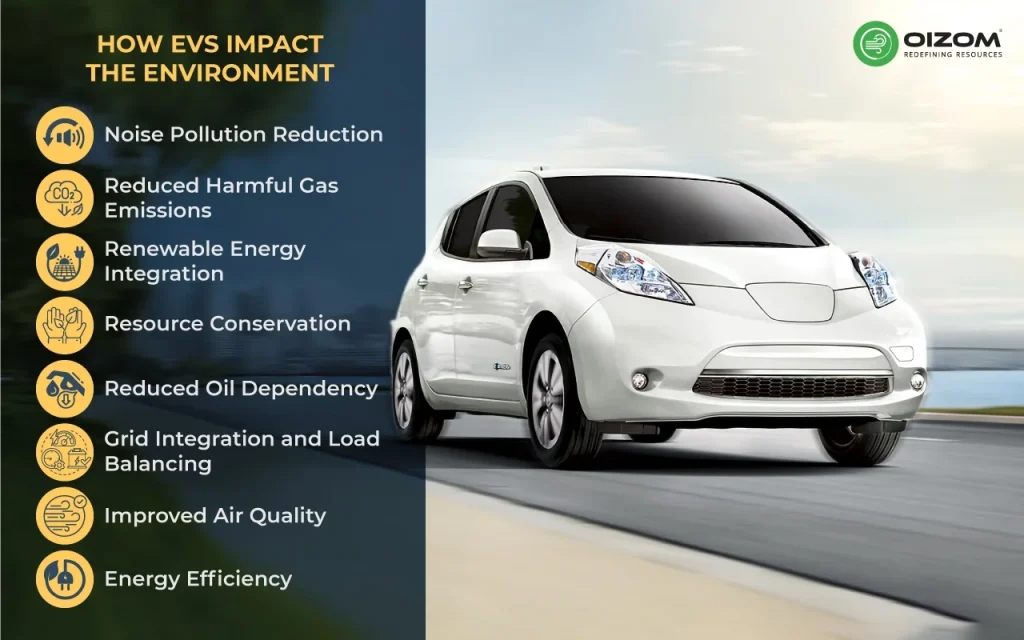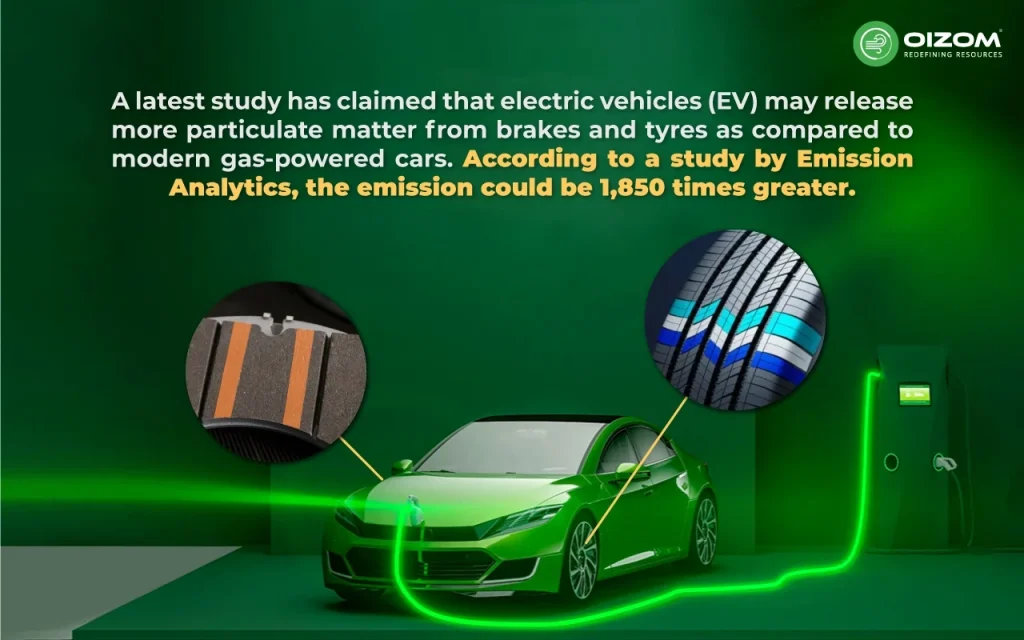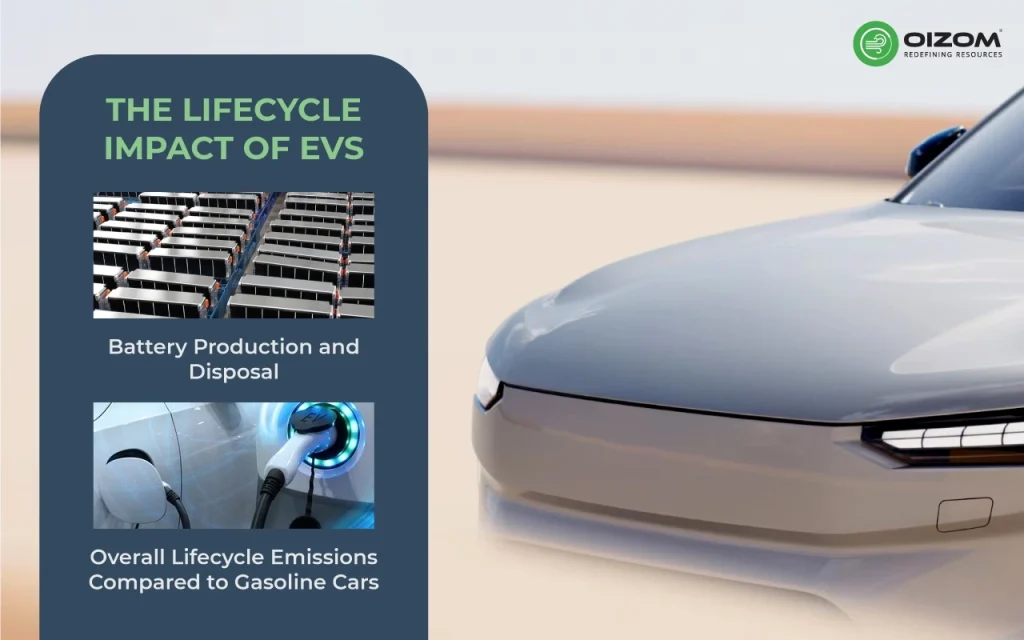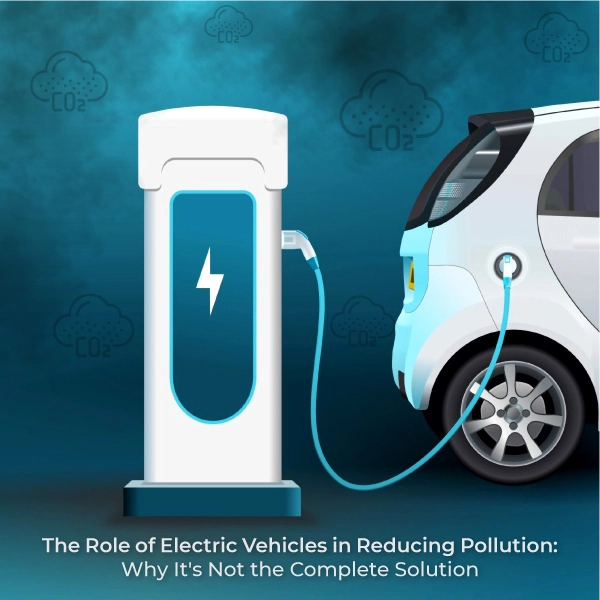Summary of Blog
Do Electric Vehicles Reduce Air Pollution? Yes, Electric vehicles (EVs) minimize air pollution by releasing zero exhaust emissions, lowering hazardous pollutants such as NOx and PM2.5, and reducing noise pollution. Their environmental impact varies depending on the electricity source, with renewable energy providing additional benefits. EVs move pollution from cities to power plants in an industry zone, which improves urban air quality. EVs release PM through braking and tires, yet they are still more environmental friendly than traditional cars. Battery production has a significant environmental impact, however recycling and sustainable materials are helping to mitigate this. EVs minimize oil consumption, improve grid integration, and boost energy efficiency. Despite production obstacles, EVs are critical to lowering global CO2 emissions and addressing climate change. They have the potential to change transportation and are critical for a sustainable future.
The Impact of Electric Vehicles on Air Pollution.
Have you ever considered how much CO2 a diesel-engine car produces? Diesel engines, despite advancements, still emit higher levels of particulate matter (PM) and nitrogen oxides (NOx) than petrol engines.
From 2001 to 2020, CO2 emissions from the Indian transportation sector increased from 155.9 Mt to 368.2 Mt. Roadways produce 88% of all CO2 emissions. It’s no surprise that more countries are concerned about the issue of climate change. Some areas are already experiencing harsher weather conditions, including severe droughts, flooding, storms, heat waves, and rising sea levels.
There is an increasing demand to cut global carbon emissions and build a more sustainable transportation system. Would you like to replace your standard car with an electric vehicle? You are not alone. In this article,
I will share the link between electric vehicles and air pollution. By the end of this article, you’ll understand how these cars affect the environment and how you can improve air quality.
How EVs Impact the Environment

One of the most significant achievements of electric vehicles is that they move air pollution from urban regions with large populations to industrial areas with power plants, typically located on the city outskirts. This is similar to closing down the coal-based thermal power station in the city’s center and ensuring that such plants are established away from metropolitan high-population regions, reducing direct exposure to individuals.
Electric vehicles exceed diesel and gasoline automobiles because their motors are more efficient and emit fewer atmospheric pollutants. Indeed, research has proven that when recycling is considered, electric cars are ultimately better for the environment in 95% of the world and that they are the future. It is projected that 1 in 2 vehicles will be electric by 2050, which would lead to a reduction in global CO2 emissions by up to 1.5 gigatonnes per year. Below, I have shared one major fact that people might not be aware of. Despite the good news, vehicles still emit particulate matter (PM) through braking and tire wear. Furthermore, CO2 will continue to be produced during the intensive production process.
Were you aware of this?

Noise Pollution Reduction
For instance, electric motors are often much quieter than Internal Combustion Engines (ICE) vehicles and exhaust systems, resulting in less noise pollution. Silencers can be fitted in the exhaust pipes of gas and diesel vehicles to minimize noise; however, they are often louder than regular headers.
Despite their significant challenges, electric vehicles might be a huge advantage in safeguarding the environment. The extent to which this is true will depend on the vehicle type and the power source.
Reduced Harmful Gas Emissions
The reduction of tailpipe (exhaust) pollution is unquestionably a benefit of electric vehicles. First, petrol and diesel cars emit pollutants such as nitrogen oxides (‘NOx’). During burning, nitrogen and oxygen in the air react to generate NO or NO2, NOx has been one of the most formidable opponents in the fight against air pollution, with serious consequences for human respiratory health.
Second, these NOx molecules can react to generate a ‘secondary’ pollutant: microscopic particulates known as ‘PM2.5’. Third, tiny particles (PM2.5) are also produced directly from tailpipe emissions. So, EVs cut NOx and PM2.5 emissions both directly and indirectly.
Renewable Energy Integration
This blog mainly focused on emissions produced by the automobile itself. Electricity plants higher in the supply chain were excluded. If your EVs are fuelled by coal, they will also contribute to air pollution.
When EVs are charged with electricity generated from renewable sources such as wind or solar power, their environmental impact is further decreased. This encourages the use of renewable energy and speeds up the transition to a sustainable energy system.
A study by the University of Berkeley ‘2035 Report’ projects that an accelerated move to EVs would prevent around 150,000 premature deaths in the US due to reductions in air pollution through 2050. It would save a further 90,000 when combined with a 90% clean electricity grid.
Resource Conservation
Building an EV that is both practical and lightweight presents a big challenge for manufacturers. Despite their shorter range and lower carbon impact, lightweight electric vehicles are difficult to manufacture using common materials. However, recycled and natural materials are increasingly similar to ordinary ones. They are long-lasting, sturdy, and green.
Despite doing so for small components, many traditional manufacturers no longer use recyclable materials for a vehicle’s base. EV makers use optimal environmentally friendly components to create lighter, more efficient vehicles. The electric vehicle sector is driving breakthroughs in battery technology, focusing on recyclability and material reuse. This method encourages the efficient use of natural resources and reduces the environmental impact of raw material exploitation.
Reduced Oil Dependency
By lowering reliance on traditional energy sources, EVs assist to reduce the environmental effect of oil production, transportation, and the risk of oil spills. This move also improves energy security and resilience.
Grid Integration and Load Balancing
Finally, smart charging infrastructure enables EVs to communicate with the electric grid intelligently. They can charge during off-peak hours when energy demand is lower, allowing for more efficient use of renewable energy sources and grid balancing, ultimately lowering system stress during peak times and boosting energy efficiency.
While there are certain limitations, such as the source of electricity and total lifecycle emissions, these points illustrate the multifaceted environmental benefits of electric vehicles, which go beyond emissions reduction to address a variety of environmental and sustainability issues.
Improved Air Quality
Even if society achieves a fully electrified future, poor air quality will continue to be a problem that must be addressed. Sensors and clean air actions are necessary to achieve this goal. Monitor PM and other Toxic gases which are released into the atmosphere, with Oizom devices which are reliable and accurate and provide real-time data on cloud platforms. So that, we can continue to deploy and achieve clean air solutions even as society moves to a more sustainable future.
Energy Efficiency
Electric motors are fundamentally more efficient than internal combustion engines. They transfer a greater amount of the grid’s electricity into vehicle movement, lowering overall energy consumption and environmental effect.
The Lifecycle Impact of EVs

An electric car requires a significant amount of resources to get from concept to reliable vehicle. The extraction of key minerals such as nickel, cobalt, and lithium, which are used to make batteries, causes major environmental difficulties.
Battery Production and Disposal
The manufacturing process of an electric car plays an essential role in its lifecycle. Battery manufacture requires a substantial amount of electricity, which, depending on where it originates from, may contribute to the car’s indirect emissions. Despite these challenges, advances in battery technology and manufacturing efficiency are steadily reducing this stage’s environmental impact
Overall Lifecycle Emissions Compared to Gasoline Cars
Operating an electric vehicle offers various environmental benefits depending on where the electricity needed for charging originates. In locations where fossil fuels are the dominant energy source for the grid, electric vehicles (EVs) lose their competitive edge over conventional vehicles due to indirect emissions. In contrast, EVs can completely cut greenhouse gas emissions in areas with a high concentration of renewable energy sources. This geographic variance highlights the importance of switching to cleaner energy sources, as well as purchasing electric vehicles.
Conclusion
Finally, Electric vehicles (EVs) are an important component of the worldwide climate change mitigation strategy. Regardless of the environmental challenges created by their production and use, EVs clearly provide a means to reduce emissions and promote a cleaner environment. As technology advances and the industry evolves, understanding Electric Vehicles and Their Impact on Air Pollution and Climate becomes essential in shaping policies and innovations that support sustainable transportation. The market share of electric vehicles stands around 39% in Norway, 2% in China and a limited 0.06% in India. Every advancement in electric vehicle technology increases the promise of a truly sustainable mobility future as long as we keep innovating and improving. In this journey, initiatives like Air Quality Monitoring in Automobile Manufacturing play a crucial role in minimizing the environmental impact of EV production, ensuring that sustainability is embedded across the entire lifecycle.
FAQs
They have some impact, but advancements in recycling and sustainable sourcing are improving their environmental footprint.
Yes, they are much quieter than traditional vehicles.
Yes, they produce zero tailpipe emissions, especially when charged with renewable energy
Generally, yes. They reduce greenhouse gas emissions and fossil fuel use, though battery production and recycling matter too.






